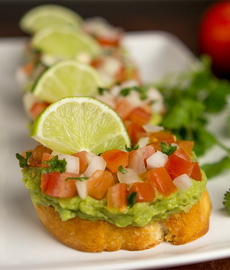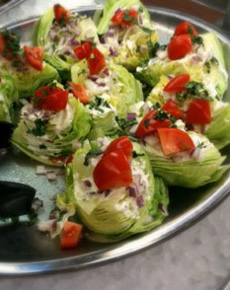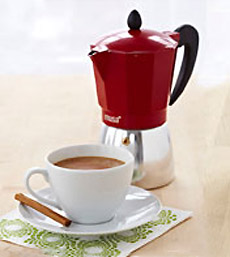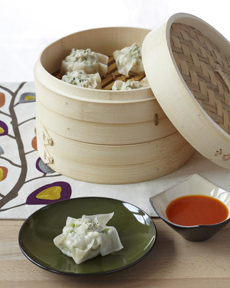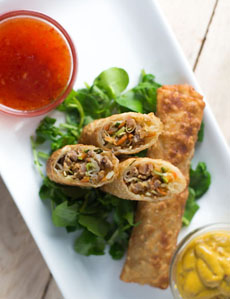|
Fine restaurants know that exciting presentation of food is almost as important as the preparation of the dish. They don’t serve main courses with mounds of starch and vegetables circling the protein; they use potatoes, rice and veggies as the bed to hold the protein.
In its simplest form, Del Frisco’s Double Eagle Steak House in New York City shows how easy it is to put your protein atop a bed of grains. You can center the protein or place it off-center, as shown in the photo.
Whatever the bed comprises—see our list below—you can make it more visually arresting and flavorful with mix-ins. Here, Del Frisco adds diced vegetables to brown rice.
Use a spoon to drizzle the sauce; you can make an easy sauce by deglazing the pan.
|
|

Grilled fish or meat looks fancier atop a bed of grains and/or vegetables. Photo courtesy Del Frisco’s. |
MENU BASICS
Start with grilled, poached or sautéed meat, poultry or seafood (or tofu). For a bed, use:
Beans: cook with at least one other ingredient for interest, such as bacon or onions, and herbs; garnish with fresh herbs
Grains: barley*, buckwheat*, black/brown/red/wild rice*, bulghur, corn*, couscous, farro*, grits, kamut*, white rice or quinoa, with mix-ins (see below)
Noodles/pasta: refined or whole grain noodles, dressed with butter/olive oil and herbs or complementary sauce
Potatoes: mashed potatoes white or sweet potatoes, or mashed cauliflower; hash browns, sautéed potatoes or other “flat” preparation
Salads: Bean salad, corn salad, mesclun, rice salad, tomato and onion salad (in season)
Vegetables: Roasted, sautéed, steamed with fresh herbs
*The asterisk indicates a whole grain.
MIX INS
A combination of ingredients is always more interesting than one alone. Would you rather have a bowl of lettuce, or a salad of lettuce plus three or four other vegetables?
Try to enhance any of your beds with at least one other ingredient; for example:
Fresh herbs: chiffonade or minced
Mixed vegetables: beans; diced carrots, celery, onions, squash, etc.; edamame; onions; peas and other favorites
Nuts and seeds: chopped or slivered almond, pecans, pistachios, walnuts or other favorites; chia, flax seeds, pepitas (pumpkin seeds), pomegranate arils
Onions: chives, green onions, leeks, red onions, shallots or yellow onions, cooked or raw as appropriate
Happy bedding!
|

